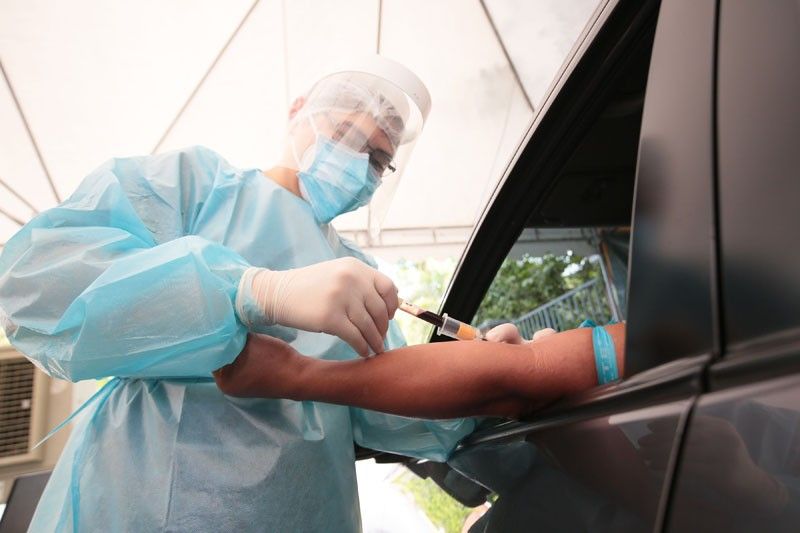Philippines has 2nd highest SEA cases after Indonesia

MANILA, Philippines — Malacañang will allow local government units (LGUs) to impose localized lockdowns to enforce minimum health standards amid the daily rapid increase in the number of coronavirus disease 2019 (COVID-19) infections, an official said yesterday.
Presidential spokesman Harry Roque downplayed the report of the Johns Hopkins Coronavirus Resource Center that the Philippines is now second to Indonesia with the highest number of COVID-19 cases in Southeast Asia.
Roque said there should be no cause for alarm despite the spike in COVID-19 infections, adding that the government has increased the capacity of the healthcare system during the first few months of the lockdown.
The report said Indonesia leads Southeast Asian countries in terms of COVID-19 cases with 64,958 as of Monday, followed by the Philippines with 46,333 and Singapore with 44,983.
On Sunday, the Philippines recorded 2,434 new COVID-19 cases, the biggest increase in a single day, with 1,147 classified as fresh cases and 1,287 as late cases.
Compared to other countries, Roque maintained that the country has been “winning significantly in the fight against COVID-19.”
“The increase in COVID-19 cases is not surprising until we find a vaccine and cure for the disease,” he said.
Roque noted that the Philippines’ positivity rate is pegged at six to seven percent for every 100,000 people tested for the virus.
“And we have a large capacity to provide hospital services to the sick. So I will always say, we are winning against COVID-19,” he said.
The government has doubled the efforts in handling the health crisis to ensure that the most vulnerable people are protected from the virus, according to Roque.
He said the mayors of Metro Manila, which remains under general community quarantine, have identified areas with high number of COVID-19 cases and discussed measures to curb the transmission of the virus.
Roque said villages with high cases of COVID-19 would be subjected to hard lockdowns instead of community lockdowns.
“The LGUs will have to be more active since they will be the ones to impose the localized lockdowns,” he said.
‘Phl not on second wave’
Despite the spike in the number of COVID-19 cases in the past weeks, the Philippines is not on the second wave of the epidemic, the Department of Health (DOH) reiterated yesterday.
Health Undersecretary Maria Rosario Vergeire said the increase in the number of positive cases is due to scaled up testing and community transmission caused by the lack of implementation of minimum health standards.
“The increase has been gradual and our health system was able to cope with the increasing number of cases,” she said.
Vergeire said this is reflected in the “indicators” being used to measure the COVID-19 response.
As of July 5, she said the country’s case doubling time was still at 7.9 days. This means that it takes more than a week for the number of COVID-19 infections to double.
The increasing number of COVID-19 cases is no longer artificial, according to Vergeire.
“This is not just because we are testing more but because there are really cases, there are clustering of cases that we have been identifying for these past days. There is also community transmission,” she said.
The DOH previously announced that an “artificial” increase in cases should be expected as the testing capacity of the country was being built up.
Vergeire, however, said the number of deaths from COVID-19 is decreasing.
“We only have 2.9 percent case fatality rate compared to more than 10 percent when we started,” she said.
Amid reports that SARS-CoV-2, the virus that causes COVID-19, had mutated and is now “more infectious,” Vergeire appealed to the public to be more cautious.
‘COVID cases may breach 100,000’
A researcher from the University of the Philippines yesterday warned the public that the number of COVID-19 cases in the country may breach 100,000 by the end of August.
Mathematics professor Guido David, who is part of the OCTA Research team that releases regular forecasts on the number COVID-19 cases, noted higher projections based on the latest data released by the DOH.
“The trajectory right now is quite high since we went under GCQ. It looks like we would reach at least 65,000 by the end of July,” Guido said. “Based on our projection, it would be higher than 95,000 by end of August. It could even be over 100,000 if we will not change our system, the way we handle the pandemic.”
Guido stressed the need to rethink solutions, especially those that are deemed to be not working in response to the public health emergency.
He cited issues on mobility, such as the rise of COVID-19 cases among personnel of the Metro Rail Transit Line 3.
“We need to find solutions for workers on how we can bring them to their workplaces,” he said.
Vice President Leni Robredo said people should not be blamed for the spike in COVID-19 cases even as she urged the government to scale up mass testing to help contain the infection.
“It’s wrong (to blame the people), because when you do that it’s already self-defeating. The presumption is the people are solely the ones at fault,” Robredo said.
President Duterte had blamed the Cebuanos’ “stubbornness” for the increase in COVID-19 cases in the province, particularly in Cebu City, which remains under the strictest lockdown.
After the country posted over 2,000 new COVID-19 cases in two days, Sen. Francis Pangilinan reiterated the need for the government to focus on finding ways to stop the spread of the virus and simultaneously address the effects of the economic slowdown.
“Until now, after four months since the first quarantine period in March, there is still no comprehensive plan to stem the number of COVID-19 cases. In fact, the number of cases is going up fast,” Pangilinan said. Sheila Crisostomo, Janvic Mateo, Helen Flores, Paolo Romero
- Latest
- Trending





























